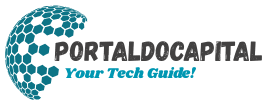In this hyper-connected world, our digital lives are busier than ever. Our inboxes, notifications, and apps compete for our attention, leaving us feeling stressed and distracted. Digital minimalism is a mindset that supports a more thoughtful use of technology. It can help us refocus, improve our productivity, and think clearly. Reducing our online activity helps us relax and make room for what truly matters. This book offers practical tips for decluttering your tech life, including how to organize your files and limit your screen time. Whether you’re feeling overwhelmed or simply want a better relationship with technology, these tips can help you regain control over your tech life.
Understanding Digital Minimalism
Digital minimalism doesn’t mean giving up technology; it means using it more wisely. This mindset, inspired by Cal Newport’s book “Digital Minimalism,” encourages the thoughtful use of digital tools and the elimination of unnecessary distractions. The goal is to ensure that every app, notification, and gadget serves a purpose in your life, not just sits there. Thinking this way can help you reduce digital fatigue, improve your concentration, and generally boost your mood.
Audit Your Digital Consumption
The first thing you should do is examine how you currently use technology. Use tools like Screen Time (iOS) or Digital Wellbeing (Android) to track how much time you spend on devices on things like email, social media, and fun apps. Determine which tasks make you feel good and which don’t. Do you really need 10 chat apps? Maybe you could ditch a few. Are those long YouTube sessions making your life better? A comprehensive assessment can help you identify areas for improvement, making it easier to clear out digital clutter.
Clean up Your Devices
First, organize your phone, computer, and other devices. Delete unused apps and old files that are taking up space on your home screen. Cluttered gadgets slow down performance and make it difficult to think. Use folders to organize your most-used apps and disable unnecessary messages. Organize files on your computer into clearly labeled folders and delete unnecessary software. A tidy digital office can make you more productive and less stressed.
Make your Email and Messages More User-friendly
Excessive emailing is a major cause of digital stress. Delete newsletters you don’t read, set up filters to ensure important messages are delivered first, and make time each day to check your email. To reduce text message overload, mute unnecessary group chats and disable read receipts. You can use Unroll.me to manage your subscriptions or Boomerang to better organize your emails. By reducing distractions, you can focus more on effective communication.
Simplify Your Social Media Use
Social media can be a waste of time. Review your accounts and unfollow pages that don’t interest you or don’t offer learning content. Set app timers to limit daily use and consider removing unnecessary platforms. Instead of aimlessly scrolling, get purposeful: interact consciously, share relevant content, and set limits to prevent hours of browsing. A simple approach to social media use helps people connect more deeply and avoid digital fatigue.
Designate Technology-free Times and Places
Setting boundaries is a key part of digital simplification. Designate technology-free spaces, such as the bedroom or the dining table, to encourage personal contact. Set aside screen-free time, especially before bed, for a better night’s sleep. A “digital sunset” involves turning off all electronic devices an hour before bed. These small changes can help you reduce your dependence on the computer and find a better balance between your online and offline life.
Automate and Simplify Repetitive Tasks
Technology shouldn’t make life harder; it should make it easier. For repetitive tasks, like backing up files or scheduling messages, use automation tools like IFTTT or Zapier. Cloud storage services like Google Drive and Dropbox can help you stay organized and avoid unnecessary files. Password systems like LastPass keep your files safe and simplify everything. When you automate routine tasks, you free up your brain for more important things.
Practice Mindful Tech Consumption
Ultimately, the key to digital simplification lies in thoughtful consideration. Before you download a new app or sign up for a service, ask yourself, “Will this improve my life?” Regularly evaluate your technology habits to ensure they’re still helping you achieve your goals. Be active, not passive: read books instead of endlessly watching the news, listen mindfully to podcasts, and prioritize deep work over multitasking. When you use technology thoughtfully, it works for you, not against you.
Conclusion
Getting rid of unnecessary technology isn’t about missing out; it’s about making room for what truly matters. Digital simplification can help you reduce stress, get more done, and shift your focus. Start small: get rid of apps you don’t use, make information easier to process, and set boundaries with your devices. In the long run, these changes will make your digital life more meaningful and fulfilling. Technology is useful, but only if you know how to use it properly. Please take the initiative today to enhance your interactions with it.
FAQs
1. What does “digital minimalism” mean?
Digital minimalism is a mindset that encourages meaningful and intentional use of technology and eliminates unnecessary digital distractions, which can improve health and focus.
2. Where should I start decluttering my digital life?
First, take a look at how you use technology. Delete apps you don’t use, organize your files, and set boundaries, such as screen-free zones or times.
3. Can digital minimalism make you feel better?
Yes, clearing out digital clutter can indeed reduce stress, improve your focus, and improve your sleep, which is beneficial for your mental health.
4. Do I need to give up all social media?
Not always—digital minimalism advocates for mindful use of technology. Keep useful websites, but don’t spend too much time on them.
5. What tools can help me in my pursuit of digital minimalism?
With apps like Screen Time and Unroll.Me and programming tools like IFTTT, you can clean up and organize your digital life.




